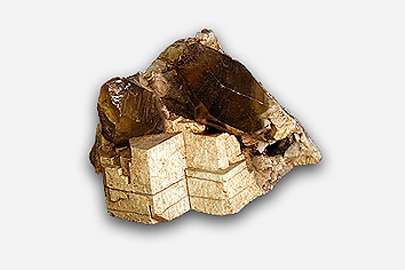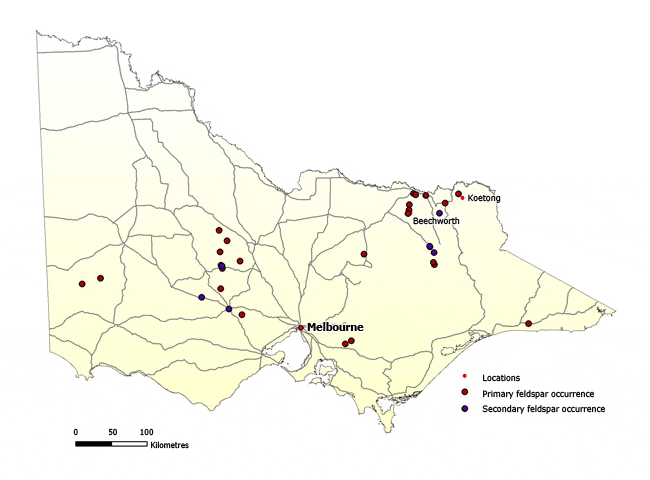Feldspar

Feldspars are aluminosilicate minerals containing varying amounts of potassium, sodium and calcium.
They are the most abundant mineral group, constituting about 60% of the Earth’s crust. The most common economic deposits of feldspars are in pegmatites.
Most commercial varieties are alkali feldspars or sodium-rich feldspars. Feldspar is an important source of alumina in the glassmaking and the ceramics industries. In ceramics, it acts as a flux and provides the vitreous lustre of chinaware and ceramic tiles.
It is used in glazes and enamels and is an important mineral filler in paints, plastics, sealants, and adhesives.
Historically, feldspar has been obtained from small feldspathic and pegmatitic dykes at a number of localities.
At Beechworth and Koetong, feldspar has been produced from coarse-grained leucocratic granites. These two deposits are the largest known in Victoria.
Most other occurrences are also in the northeast of the state.
View the full list of industrial minerals
Further information
Industrial minerals and rocks of Victoria – Geological Survey of Victoria Report 102
Maps
To create your own maps online and in real time, plan exploration activities by viewing land status, or download GIS data to add to your own maps, visit GeoVic.

Page last updated: 12 Jan 2023